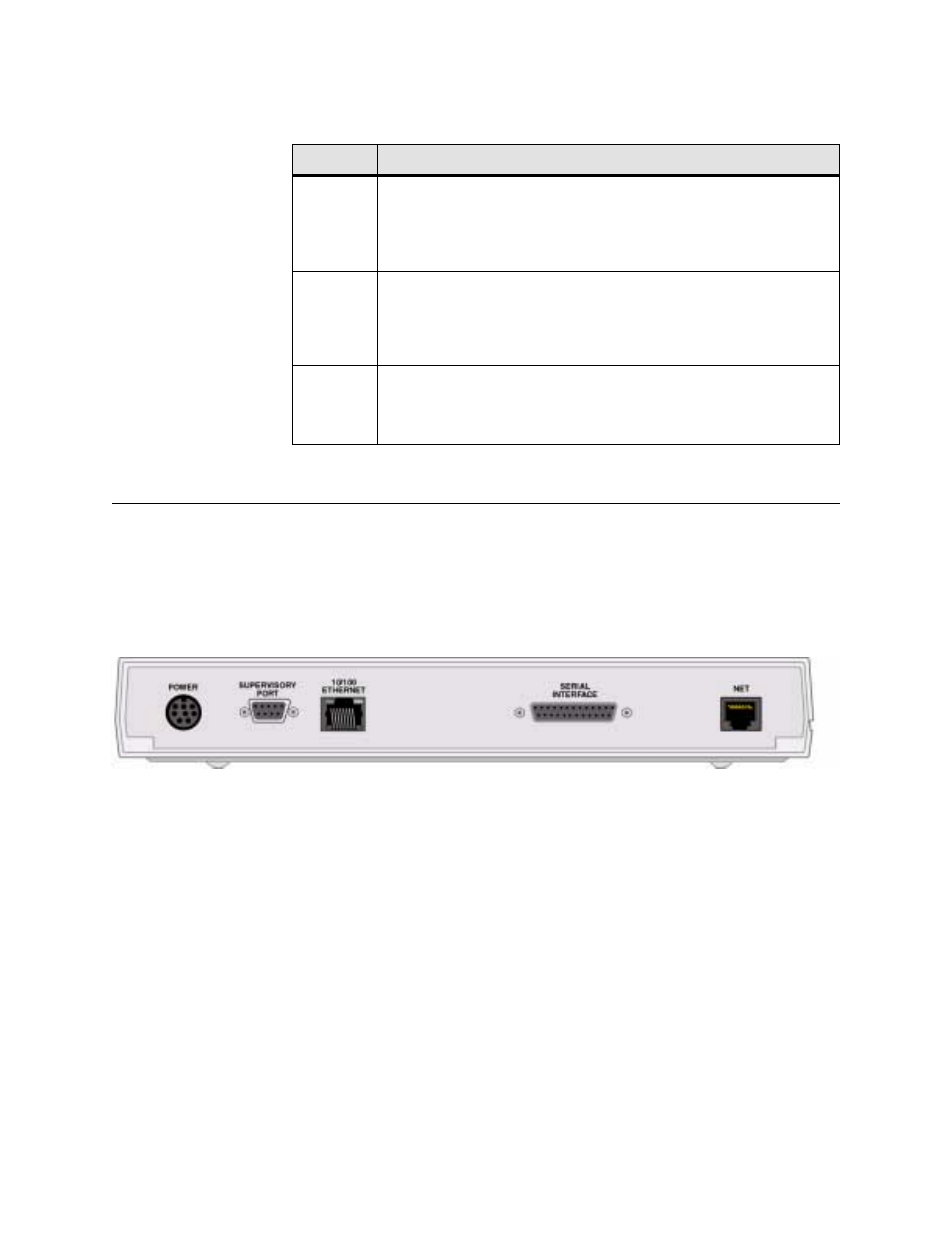Rear panel connections, Supervisory port, Rear panel connections -5 – Verilink FrameStart FSM (34-00299.E) Product Manual User Manual
Page 17: Supervisory port -5

A b o u t t h e F r a m e S t a r t F S M
1-5
The user-activated input control buttons used to access and set configuration
and control options from the LCD menus are defined in the table below:
Rear Panel Connections
The rear panel of the FrameStart FSM has five connectors
−
POWER
,
SUPERVISORY PORT
,
10/100 ETHERNET
,
SERIAL INTERFACE
, and
NET
−
as shown in Figure 1.2. Each of these connectors is described in the
paragraphs below.
Supervisory Port
The
SUPERVISORY PORT
on the FrameStart FSM is a DB-9 female DCE
connector configured for 8 bits, no parity, and 1 stop bit. Bit rates are
configured through the Web server interface (see Supervisory Screen on
page 3-15) or VT 100 interface (see Supervisory Configuration Screen on
page 4-16). The Supervisory port speed can be set to 1200, 2400, 4800, 9600,
19200, 38400, 57600, or 115200 bps. The initial default rate of the
Supervisory port is 19200 bps.
On power-up, the Supervisory port sends out diagnostic messages at the bit
rate of 115.2 kbps until the Supervisory service acquires the Supervisory port.
These diagnostic messages can disrupt the connected device; however you can
configure the unit to disable their transmission.
Button
Description
EXIT
The
EXIT
button allows exiting a menu option which then places the
unit in the next higher level in the menu hierarchy. If the user is in the
process of editing an option, pressing the
EXIT
button exits that screen
without saving any changes. If in the main menu, pressing
EXIT
logs
off the unit.
SCROLL
The
SCROLL
button allows the user to review the available options for
a given level in the menu hierarchy or to scroll through possible
settings for a parameter. The
SCROLL
button is also used to set
alphanumerical values, where applicable, by scrolling incrementally
through digits 0–9 or letters A–Z and a–z.
SELECT
The
SELECT
button allows the user to select the currently displayed
option or value for a given field, and is also used to enter an “edit”
mode for parameters that require user-specified input. Additionally, the
SELECT
button is used to confirm certain actions or settings.
Figure 1.2
FrameStart FSM Rear Panel
